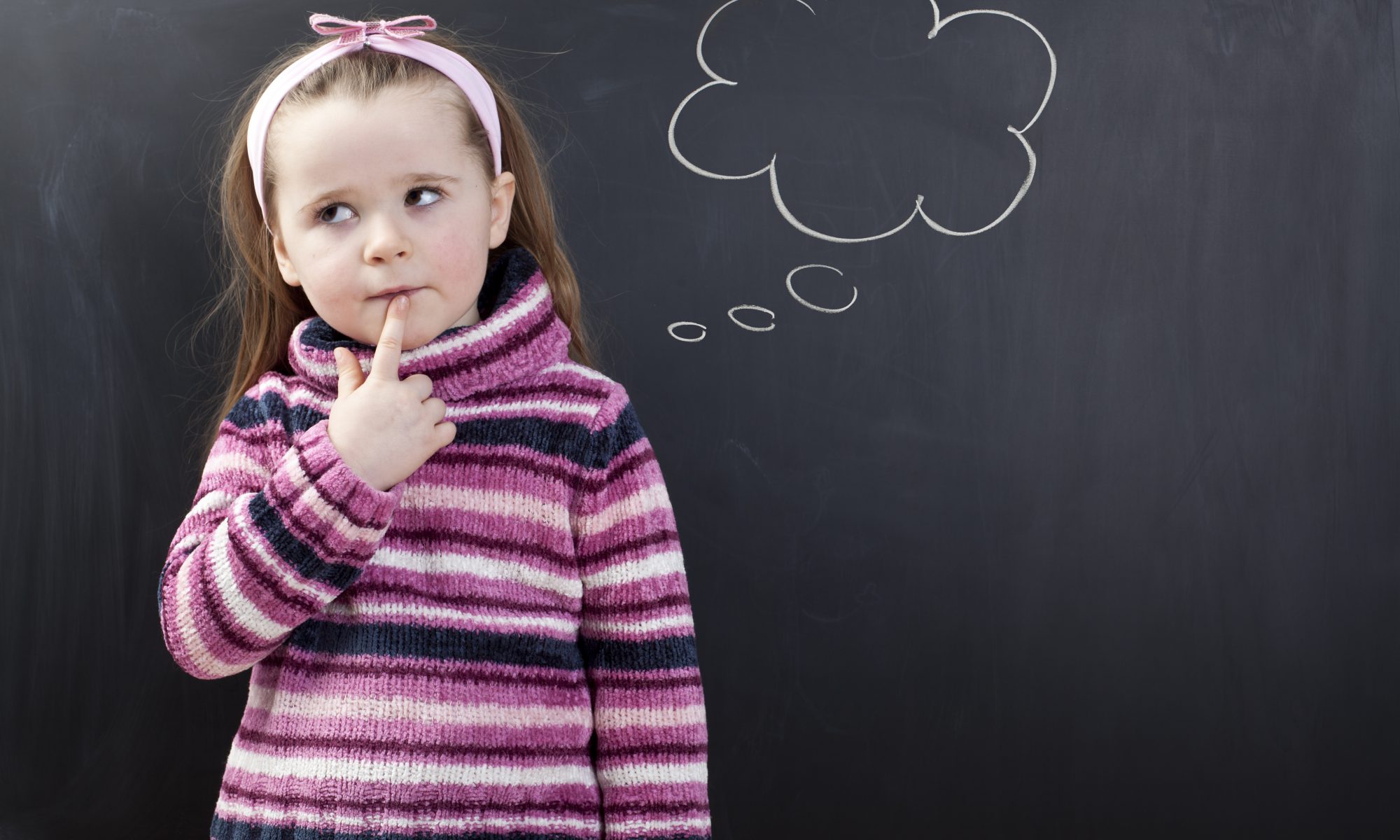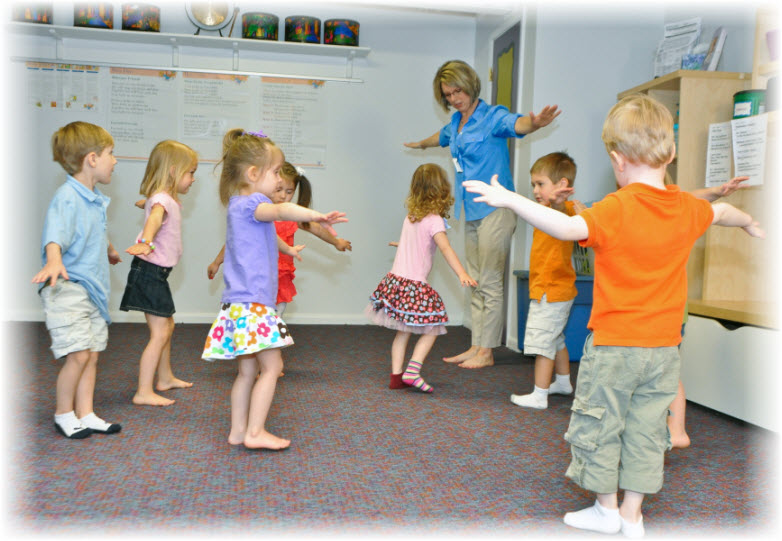More reasons to celebrate the benefits of music

Last month, we celebrated Music in Our Schools Month. Truth be told, though, we celebrate the benefits of music every month (every day actually). After all musical activities stimulate development in every area of the brain! April brings us Math Awareness Month and—you guessed it—one more reason to celebrate the benefits of music!
 The known connections between music and math go way back. The 17th century German mathematician, Gottfried Leibniz, explained it this way: “Music is the sensation of counting without being aware you were counting.” Centuries later we understand more about the benefits of music on learning, including on the cognitive development in children.
The known connections between music and math go way back. The 17th century German mathematician, Gottfried Leibniz, explained it this way: “Music is the sensation of counting without being aware you were counting.” Centuries later we understand more about the benefits of music on learning, including on the cognitive development in children.
A quick experiment about the benefits of music
Try this experiment: One, two buckle my shoe. Three, four shut the door. Five, six pick up sticks. Seven, eight lay them straight. Nine, ten begin again. You did it, didn’t you? Before you finished reading that nursery rhyme, you found yourself singing it, instead. It’s okay. You probably do that with the ABCs, too. It’s how many of us learned those building blocks of reading and math—through nursery rhymes, songs, and maybe a few dance moves!
The National Association for the Education of Young Children (NAEYC) recently published a report: The Patterns of Music: Young Children Learning Mathematics through Beat, Rhythm, and Melody. This report highlights some of the links between music and math and concludes by saying:
“With new understanding about the nature of everyday learning experiences, the key role of patterns in the development of literacy and mathematics, and the need for a stimulating environment in the very early years, the importance of music in the home and in the classroom is becoming clear. Music is children’s first patterning experience and helps engage them in mathematics even when they don’t recognize the activities as mathematics. Music is a highly social, natural, and developmentally appropriate way to engage even the youngest child in math learning.”
3 benefits of music on early math skills
1. Music helps young children learn to count by rote. Young children learn to count by rote—a memorizing process using routine and repetition. Learning to count by rote helps children develop number vocabulary, memory, patterning, and sequence—all foundational skills for math. Music gives children many opportunities to practice counting. For example, in our early childhood education curriculum, ABC Music & Me, when we “roll, roll, roll…1, 2, 3” an instrument, count to three and jump up during the circle dance, recite the numbers playing with balls, or count the beats in a nursery rhyme, children practice counting in a fun, engaging way, which reinforces the beginning stages of learning numbers.
Try this music and movement activity: 1, 2, 3, Count with Me! Tap into young children’s love of games by playing a game of “1, 2, 3, Count with Me!” Count together how many crayons to put away, how many steps it takes to get from the rug to a chair, or even how many people need a coat for outside.
2. Music and movement activities teach children about spatial awareness.
 Music supports young children’s spatial awareness development through movement, songs, poems, and props. So, for example, in our early childhood music education classes, when we explore the directions up and down during a fingerplay, dance forwards and backwards based on the cues heard in a song, or go on a swervy-curvy blanket ride, young children gain a greater understanding of spatial awareness. Exploring spatial awareness through whole body movement eventually helps children to safely navigate around a room, tell the difference between letters and group them together on a page to recognize words, and understand geometry!
Music supports young children’s spatial awareness development through movement, songs, poems, and props. So, for example, in our early childhood music education classes, when we explore the directions up and down during a fingerplay, dance forwards and backwards based on the cues heard in a song, or go on a swervy-curvy blanket ride, young children gain a greater understanding of spatial awareness. Exploring spatial awareness through whole body movement eventually helps children to safely navigate around a room, tell the difference between letters and group them together on a page to recognize words, and understand geometry!
Try this music and movement activity: Do the Hokey-Pokey! Yes, that Hokey-Pokey from our own childhoods. Using the directional words throughout the day, makes personal connections and helps children gain a better understanding of the concept and boosts overall spatial awareness.
3. Music leads children to experience patterns through movement, listening, and playing instruments. Rhythm patterns are combinations of long and short sounds and silences. For example, in a Kindermusik preschool or toddler curriculum, educators may lead the class to “step, step, step, stop” or “ta, ta, ta, rest” with rhythm sticks. This helps children learn rhythm patterns (quarter note, quarter note, quarter note, rest), a basic musical concept. Plus, whole body involvement with patterning lays an early foundation for math.
Try this music and movement activity: Hold it steady. Repeating the steady beat heard in a musical piece helps children identify and repeat a simple pattern. While listening to music together, tap or clap a steady beat to the music.
The benefits of music set a child up for early math success and more
 The New York Post published an article, “The essay that got 1 student into all 8 Ivies,” about High School student, Kwasi Enin. Enin was accepted into all 8 Ivy League colleges, earned a 2250 on his SATs, and hopes to become a medical doctor. In the article, Enin said: “I directly developed my capacity to think creatively around problems due to the infinite possibilities of music.” His love of music sparked his “intellectual curiousity” and “helped him play a role in his community and learn leadership values.”
The New York Post published an article, “The essay that got 1 student into all 8 Ivies,” about High School student, Kwasi Enin. Enin was accepted into all 8 Ivy League colleges, earned a 2250 on his SATs, and hopes to become a medical doctor. In the article, Enin said: “I directly developed my capacity to think creatively around problems due to the infinite possibilities of music.” His love of music sparked his “intellectual curiousity” and “helped him play a role in his community and learn leadership values.”
We know that those skills he learned playing the viola for nine years probably also contributed to his high SAT score and will continue to help him as he strives towards his goal of becoming a physician.
And the reasons to celebrate music continue…
Learn more about using music in the early childhood classroom to support the cognitive development in children, including early math, literacy, and language skills.
To experience the benefits of music with your child, find a local Kindermusik educator in your area.
 When a researcher sets out to understand how children learn, or better yet, don’t learn math, some interesting information comes to light, especially when the research focuses in on the early years when preschoolers are just beginning to be introduced to fundamental mathematical concepts. Such was the case in a recent study conducted by Dr. Nicole McNeil and her team at the University of Notre Dame.
When a researcher sets out to understand how children learn, or better yet, don’t learn math, some interesting information comes to light, especially when the research focuses in on the early years when preschoolers are just beginning to be introduced to fundamental mathematical concepts. Such was the case in a recent study conducted by Dr. Nicole McNeil and her team at the University of Notre Dame.



 The known connections between music and math go way back. The 17th century German mathematician, Gottfried Leibniz, explained it this way: “Music is the sensation of counting without being aware you were counting.” Centuries later we understand more about the benefits of music on learning, including on the cognitive development in children.
The known connections between music and math go way back. The 17th century German mathematician, Gottfried Leibniz, explained it this way: “Music is the sensation of counting without being aware you were counting.” Centuries later we understand more about the benefits of music on learning, including on the cognitive development in children.



